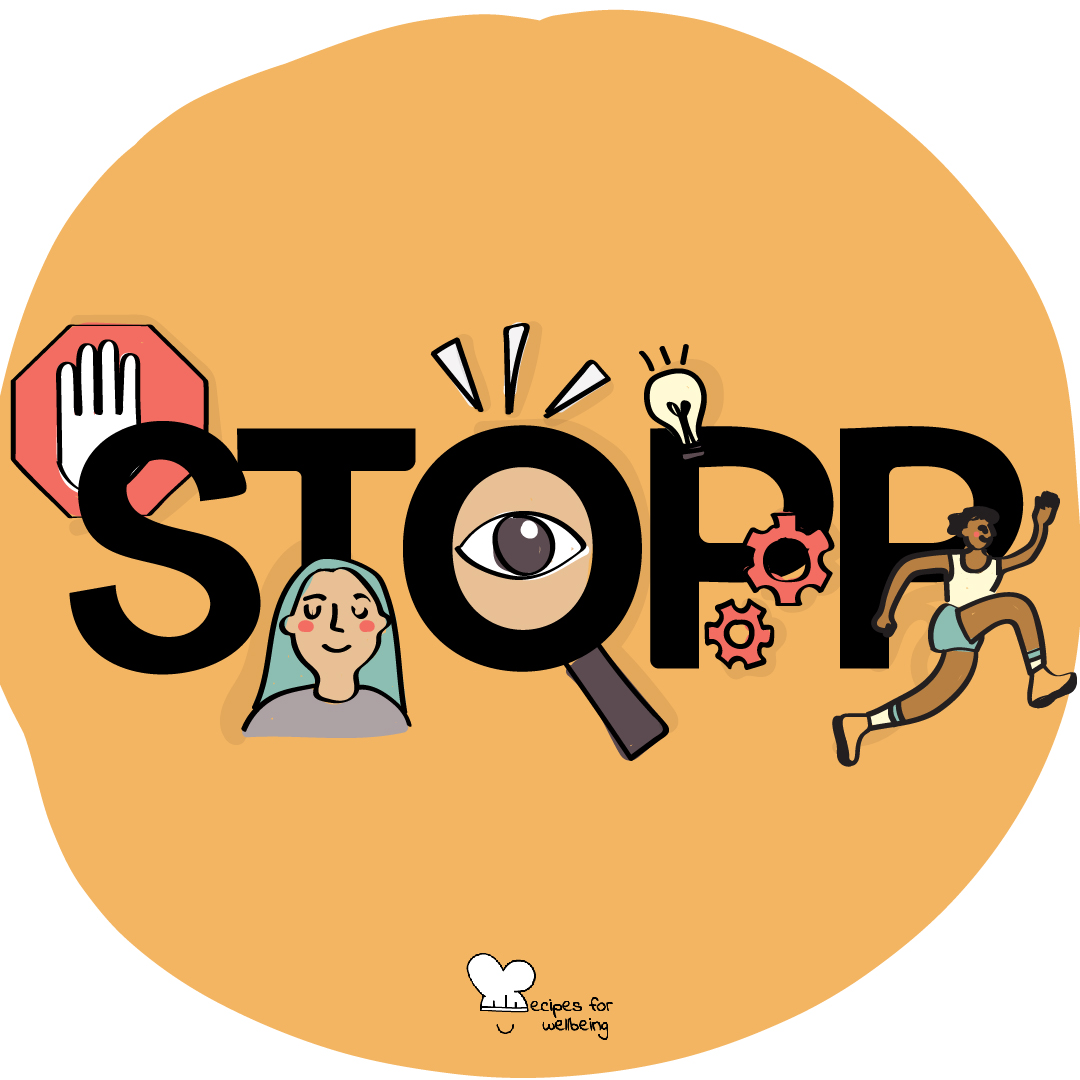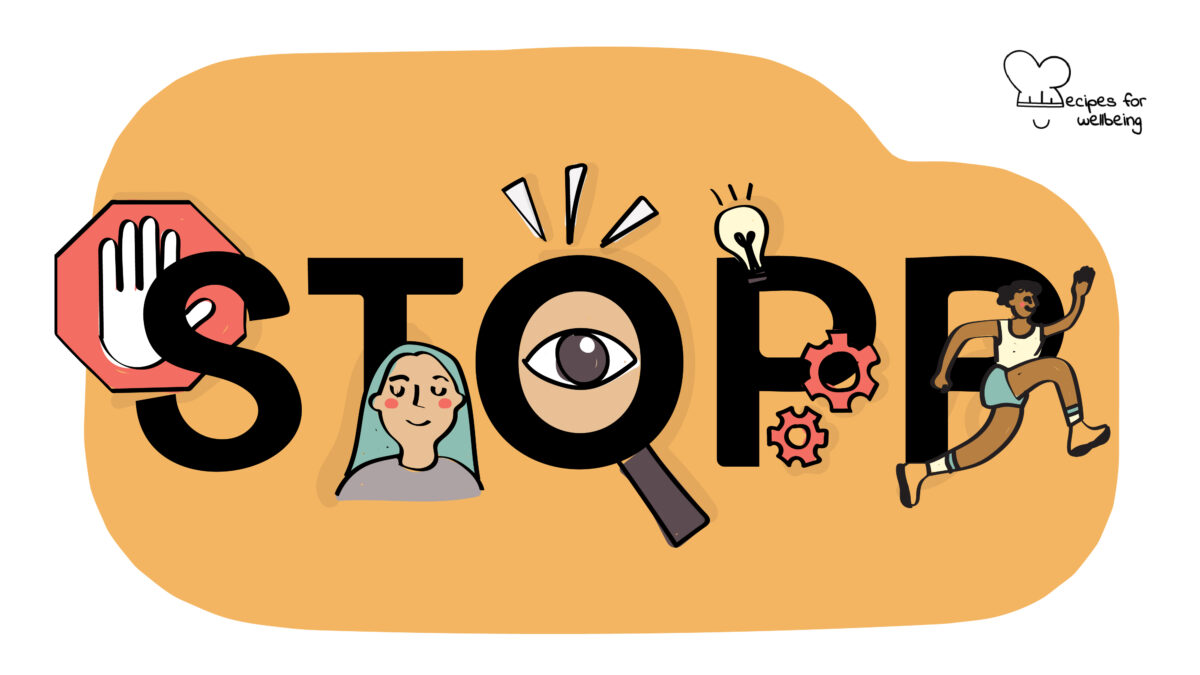
STOPP framework
Go with the slow. ―Unknown
👥 Serves: 1 person
🎚 Difficulty: Easy
⏳ Total time: 5 minutes
🥣 Ingredients: A chair for sitting or a wall to find support if standing
💪 Nutritional values: Acceptance, Perspective, Calm, Balance, Processing

STOPP framework
📝 Description
A simple framework to work with difficult emotions.
It is absolutely okay to experience strong and unpleasant emotions such as anger, sadness, frustration, etc. These “difficult” emotions act as signals that something is out of balance and requires your attention. Our default response is to wish the difficult emotions away. But is another path possible? The STOPP framework helps you learn to accept and manage your emotions effectively. STOPP stands for:
- S = Stop
- T = Take a breath
- O = Observe
- P = Perspective
- P = Practise
This recipe has been adapted from the “Mind & Body – Teacher Well-Being: Strategies for Emotional Resilience” guidebook developed by Teach for Malaysia. If you are looking for additional practices to help you work with difficult emotions, we invite you to check out our recipes “Colourful confusions” and “Cycle of emotions”.
👣 Steps
Step 1 – Stop (1’)
Pause for a moment, right now. If you are holding something, put it down. If your mind is racing with thoughts, tell yourself to “Stop”.
Step 2 – Take a breath (1’)
Time to take a few deep breaths. To do so, sit straight but without adding strains to your back. If it is not possible to sit, stand against something that can support you, like a wall or a tree. Take three deep breaths, in through the nose, and out through the mouth. As you do this, focus solely on your breath.
Step 3 – Observe (1’)
Now you can turn your attention to observe what you are experiencing. Consider the following questions:
- What am I feeling right now?
- What is my mind saying?
- How is my body reacting?
- What am I reacting to?
These questions help you describe your feelings, thoughts, physical sensations, and reactions.
Step 4 – Perspective (1’)
Can you look at the situation from a different perspective? Consider the following questions:
- What advice would I give to a trusted friend?
- What would a loved one say to me right now?
- How important will this be in 3/6/12 months’ time?
Step 5 – Practise (1’)
Now you can make a more informed decision and identify what is best suited for you. Then practise what is most helpful.

